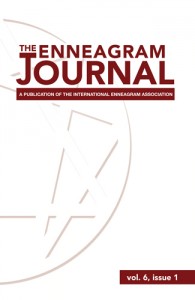 A key characteristic for leaders is to be able to understand and deal with different types of people or characters. In my work I make use of a model of personality, the Enneagram, that my clients find useful in understanding themselves and their colleagues. The Enneagram has not, for a variety of reasons, been subject to a great deal of academic research.
A key characteristic for leaders is to be able to understand and deal with different types of people or characters. In my work I make use of a model of personality, the Enneagram, that my clients find useful in understanding themselves and their colleagues. The Enneagram has not, for a variety of reasons, been subject to a great deal of academic research.
In a recent essay I wrote together with Jack Killen, MD, recently published in the Enneagram Journal, we explore ways to foster interest in academic research in the Enneagram and how the research and Enneagram communities can learn from each other. The essay draws heavily on Jack’s experience as Deputy Director of NCCAM, a position he is about to leave so that he can begin enjoying a well-earned retirement.
If you’re an Enneagram practitioner, the essay provides some pointers on how to language and present ideas about the Enneagram to business or research audiences. If you’re a researchers in psychology, neuroscience, ethology or related areas, the essay indicates potential areas for fruitful research.
Here’s the introduction to the essay, reproduced with kind permission from the Enneagram Journal:
The mission of the IEA is to create a world in which the Enneagram is widely understood and constructively used. So many in our community were delighted that CNN recently carried a report on the Enneagram because of the visibility such an article affords. However some, including the authors of this article, also rolled their eyes in despair because the article opened with the question, “Can a quasi-mystical system rooted in ancient philosophies bring enlightenment, efficiency and a better bottom line to organizations?” In the article the author notes “But the system is not without its hitches, and its mystical background does raise some eyebrows.” This is no secret within the Enneagram community. While a number of gifted and creative Enneagram teachers have made significant inroads, there remain many obstacles in the path to wider interest and use, particularly in the business, scientific and engineering communities.
There is more to our own eye-rolling and the broader skepticism of many more “mainstream” disciplines and communities than quasi-mystical origins, however. We suggest the CNN report highlights two kinds of gaps that the Enneagram community can focus on as it seeks to reach out to a wider audience: credibility and languaging. First, the Enneagram lacks the kind of empirical and scientific evidence about validity and efficacy which many people look to as a measure of credibility. While this is particularly true in the worlds of business, science, and engineering, it is also true for much of the general public. Second, the dialect or jargon of the Enneagram is not easily accessible to outsiders.
Our contention is that it will be important for the Enneagram community to bridge these gaps proactively, by integrating scientific approaches with teaching and practice, and that doing so will foster practitioners’ personal growth and ability to reach broader audiences. By learning to communicate with and address some of the concerns of those skeptical of the Enneagram, we will help to strengthen its “brand”. An improved dialogue with scientists will lead more readily to a broader acceptance within the broader professional and business communities for the Enneagram. It may also help a wider range of health professionals improve their practice in many different ways. For example, knowledge about and use of the Enneagram can undoubtedly enhance provider-patient relationships; and it is a highly plausible hypothesis that the Enneagram can help psychologists and neuroscientists better understand the workings of personality.
In the next section, we discuss the two gaps the Enneagram community needs to bridge when reaching out to wider “mainstream” audiences. In the rest of this essay, we discuss concrete steps to that end:
- Understanding and appreciating the paradigms and methods of science, including their strengths and weaknesses,
- Adopting methods and tools from science to strengthen Enneagram credibility and practice, and
- Seeking opportunities to interact and collaborate with the scientific and other communities the Enneagram has struggled to reach
These steps have been distilled from our own thinking and discussion about our personal experiences – one a mathematician and engineer and the other a medical research scientist – and also Enneagram practitioners and teachers in a variety of settings. In other words, we have feet planted firmly in both worlds and in that regard have perspectives from both. To what extent the fact that we also both identify with Type Nine influences our perspectives is an interesting, if peripheral inquiry. But from these vantage points we offer these steps as a starting point for discussion and healthy debate in the community so that we can all contribute to a world where the Enneagram is more widely understood and constructively used.
If you’d like to continue reading the article, this issue of the Enneagram Journal is available from an Amazon site or your local friendly bookstore.
Photo: International Enneagram Association Publications

Thank you, CJ! Important to discuss these.
Thank you, Leila! We’ll be opening up a space on Nine Poitns Magazine to host this discussion. I look forward to your contribution.